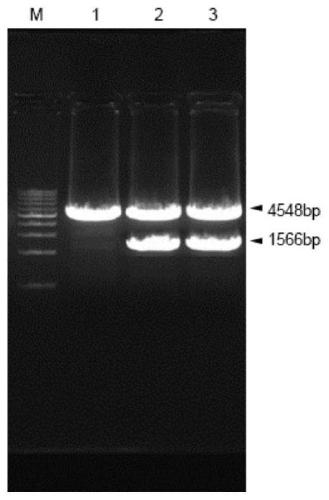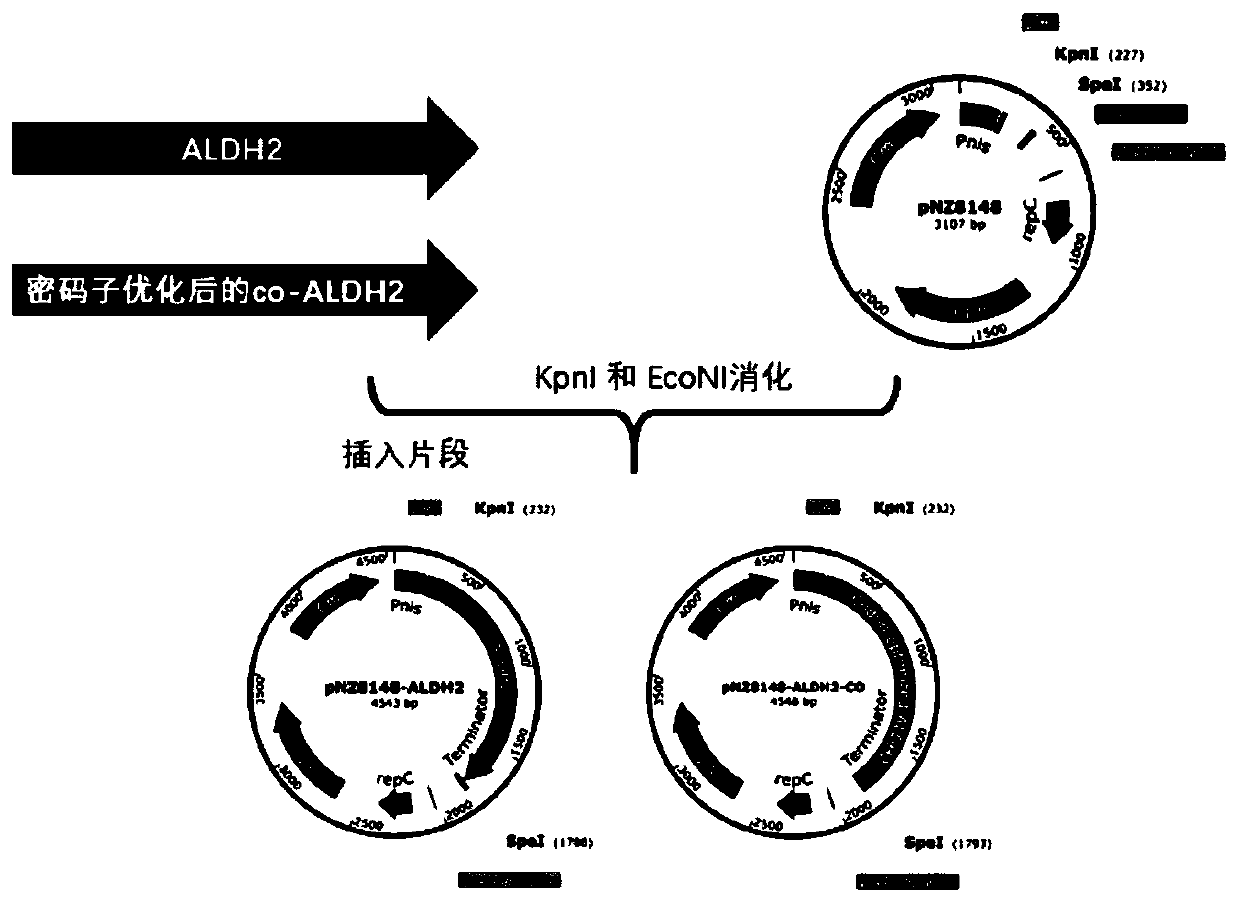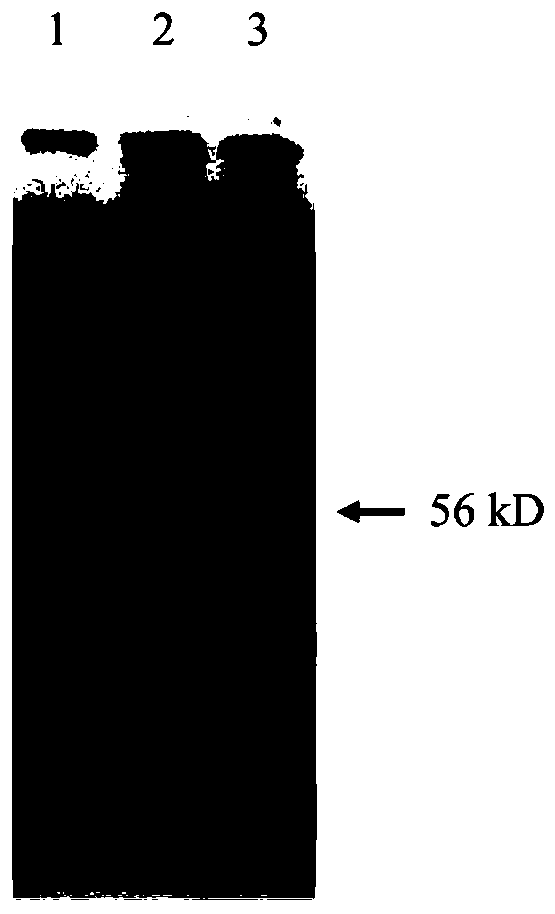Acetaldehyde dehydrogenase recombinant gene as well as lactic acid bacteria vector and application thereof
An acetaldehyde dehydrogenase and recombinant gene technology, which is applied in the field of acetaldehyde dehydrogenase recombinant gene and its lactic acid bacteria carrier, can solve problems such as unsuitable health food preparation, and achieve the effects of reducing acetaldehyde concentration and prolonging half-life
- Summary
- Abstract
- Description
- Claims
- Application Information
AI Technical Summary
Problems solved by technology
Method used
Image
Examples
Embodiment 1
[0042] This embodiment provides a recombinant gene encoding human recombinant acetaldehyde dehydrogenase, the nucleotide sequence of which is shown in SEQ ID NO:1. The artificial synthesis method of this recombinant gene is as follows:
[0043] 1) Obtain the ALDH2 gene sequence (No. CR45699) from the NCBI database, use Signal P 3.0Server online analysis website to analyze and according to the codon preference of lactic acid bacteria, replace the codons in the ALDH2 gene sequence that are used less frequently in the target lactic acid bacteria Synthesize optimized ALDH2-CO (Codonoptimized) enzyme gene for codons with high frequency usage.
[0044] 2) Introduce restriction endonuclease KpnI and EcoNI digestion sites at the 5' end and 3' end of the ALDH2-CO enzyme gene respectively, and obtain the ALDH2 target gene through PCR amplification, agarose gel electrophoresis and gel recovery in sequence fragment.
[0045] Among them, the specific operation of PCR amplification is as ...
Embodiment 2
[0050] This embodiment provides a lactic acid bacteria engineering bacterium pNZ8148-coALDH2, which is a lactic acid bacteria expression vector expressing the recombinant gene of Example 1. The establishment method of the vector is as follows: figure 2 As shown, specifically: NZ9000 lactic acid bacteria were bathed in ice water until they melted. In a 200 μL system, the OD 600nm of the bacterial solution was 0.4 and 10 μg of plasmid, and mixed by pipetting. After 15 minutes of ice-water bath, the mixture was transferred to an electric cup and continued to ice-bath for 15 minutes. Electroporation conditions were voltage 1400V / cm, resistance 400Ω, capacitance 25μF, ice-water bath immediately after electroporation for 5ms; electroporation product 200μL was added with a final concentration of 20mM MgCl 2 and 2mM CaCl 2 Incubate in 800 μl GM17 liquid medium at 30°C for 2 hours. Spread the bacteria solution on the MRS medium plate containing 10 μg / ml chloramphenicol and wait for t...
Embodiment 3
[0052] Fermentation of the starting strain (NZ3900), the control strain (pNZ8148-ALDH2), and the codon-optimized strain (pNZ8148-coALDH2) obtained in Example 2, and enzyme activities under different conditions.
[0053] The construction method of the control strain (pNZ8148-ALDH2) is basically the same as that of the above pNZ8148-coALDH2, the difference is that the pNZ8148-ALDH2 vector is used, and the codons of ALDH2 are not optimized.
[0054] The starting strain NZ3900, the control strain (pNZ8148-ALDH2), and the codon-optimized strain (pNZ8148-coALDH2) were inoculated in the MRS lactic acid bacteria medium respectively, and activated at 30°C, and then the three bacterial solutions were simultaneously transferred to fresh yeast Extract the peptone glucose medium for cultivation, and the specific operation steps are as follows:
[0055] (1) Activation of bacteria
[0056] Take 30 μL of the original bacteria and genetically engineered bacteria stored in glycerol tubes and a...
PUM
 Login to View More
Login to View More Abstract
Description
Claims
Application Information
 Login to View More
Login to View More - R&D
- Intellectual Property
- Life Sciences
- Materials
- Tech Scout
- Unparalleled Data Quality
- Higher Quality Content
- 60% Fewer Hallucinations
Browse by: Latest US Patents, China's latest patents, Technical Efficacy Thesaurus, Application Domain, Technology Topic, Popular Technical Reports.
© 2025 PatSnap. All rights reserved.Legal|Privacy policy|Modern Slavery Act Transparency Statement|Sitemap|About US| Contact US: help@patsnap.com



